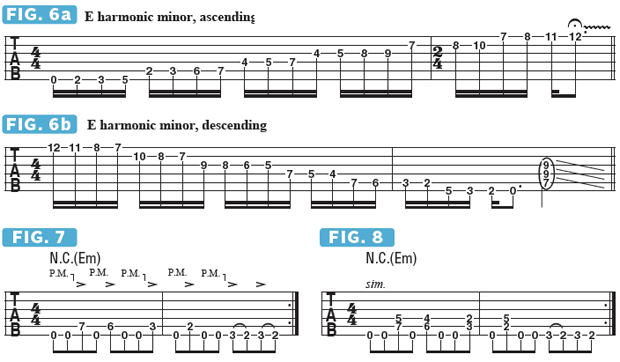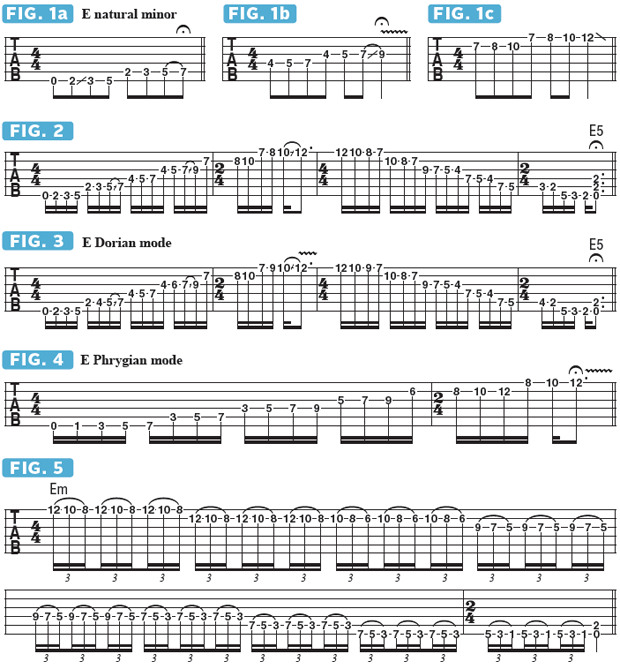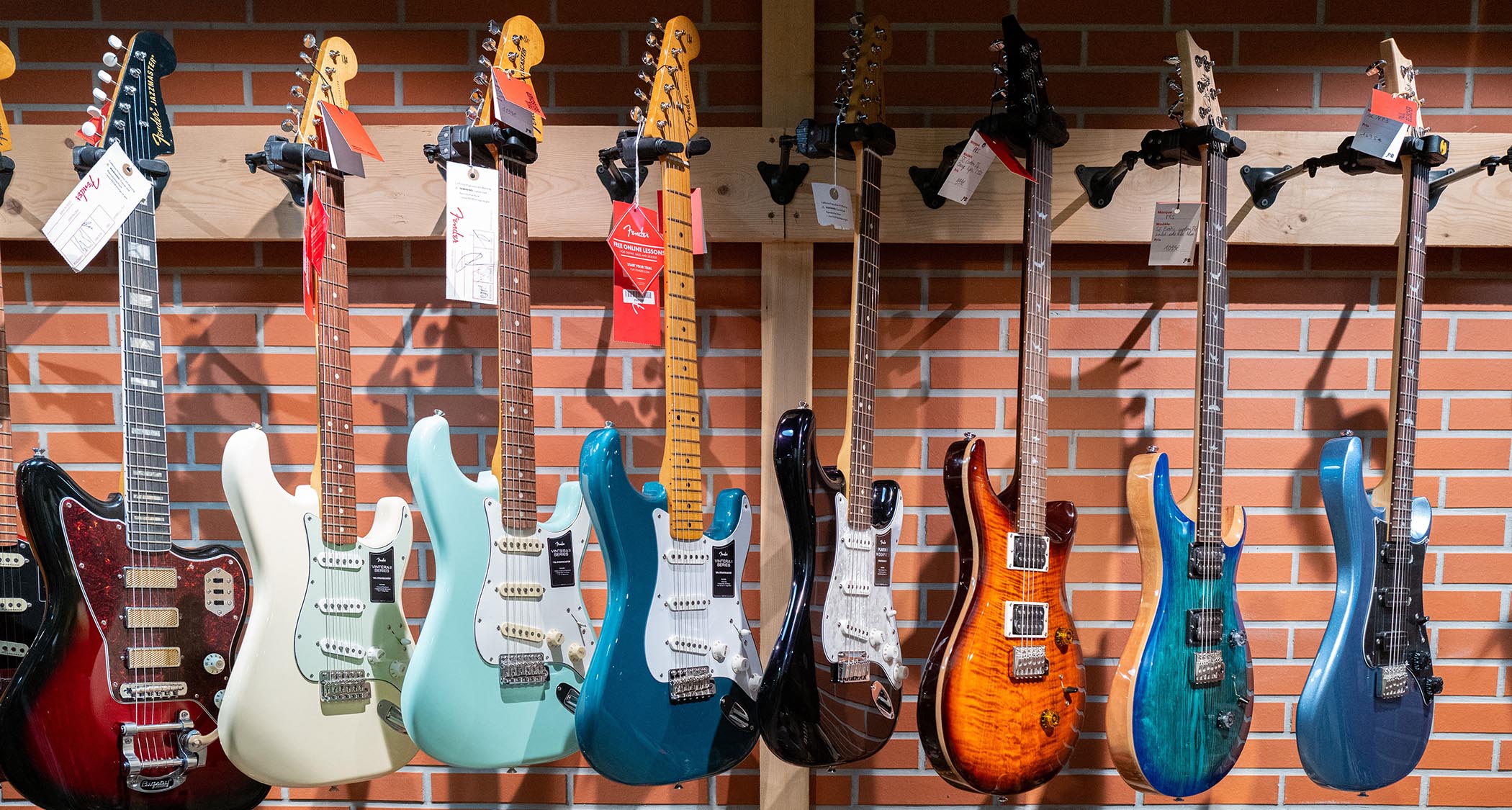Guitar scales for metal: how to incorporate minor scales into riffs and rhythm parts
Learnt the most commonly used scales and modes in metal guitar
The minor scale is the most commonly used scale in metal. This month, I’d like to detail the most prevalent minor scales in metal: natural minor (also known as the Aeolian mode), the Dorian mode, the Phrygian mode and the harmonic minor scale.
To begin, let’s play each of these scales in the key of E, starting with E natural minor. FIGURE 1a shows this scale played in one octave, starting from the open low E string and staying on the bottom two strings. You can see the symmetry in the fingering pattern, as the second, third and fifth frets are played on both the low E and A strings.
The same type of symmetry occurs in the second octave, as shown in FIGURE 1b, as well as in the third octave (see FIGURE 1c). FIGURE 2 shows E natural minor played across three octaves. Another essential minor scale is the Dorian mode.
FIGURE 3 illustrates this scale in three octaves. Be aware that, as compared to natural minor, there is only one note that is different in Dorian: the sixth scale degree. In natural minor, the sixth is minor, or “flatted,” whereas in Dorian, the sixth is major, or “natural.”
The Phrygian mode, shown in FIGURE 4, sounds slightly darker than natural minor and Dorian minor. The intervallic structure of Phrygian is almost identical to natural minor, with the exception of the second scale degree, which in Phrygian is minor, or “flatted”—F in the key of E, as opposed to the major second, F#, present in natural minor. The Phrygian mode can be used to play long runs of symmetrical licks across all six strings.
As shown in FIGURE 5, I can play fast triplet figures articulated with pull-offs on every string and create a seamless sound while moving down through three octaves. Also essential to metal guitar is the harmonic minor scale, shown in the key of E in FIGURES 6a and 6b. Harmonic minor is also very similar to natural minor, with the exception of the seventh scale degree.
In harmonic minor, there is a major, or “natural,” seventh, which in the key of E would be D#. Harmonic minor is a great scale for heavy single-note licks, as demonstrated in FIGURE 7. A great twist is to play double-stops, or two-note figures, against the open low E pedal, as I do in FIGURE 8, something heard often in the music of In Flames and At the Gates.
All the latest guitar news, interviews, lessons, reviews, deals and more, direct to your inbox!


